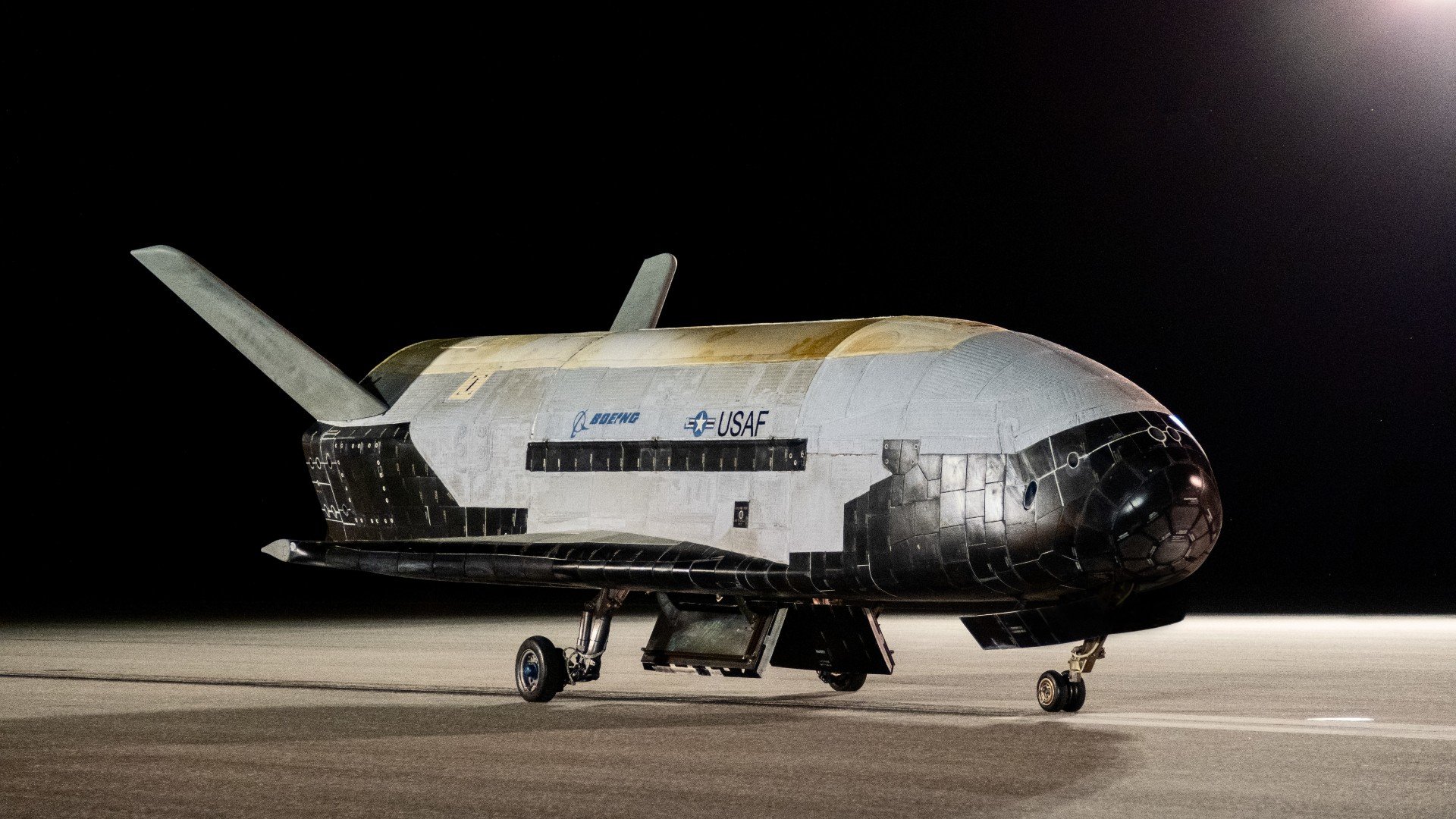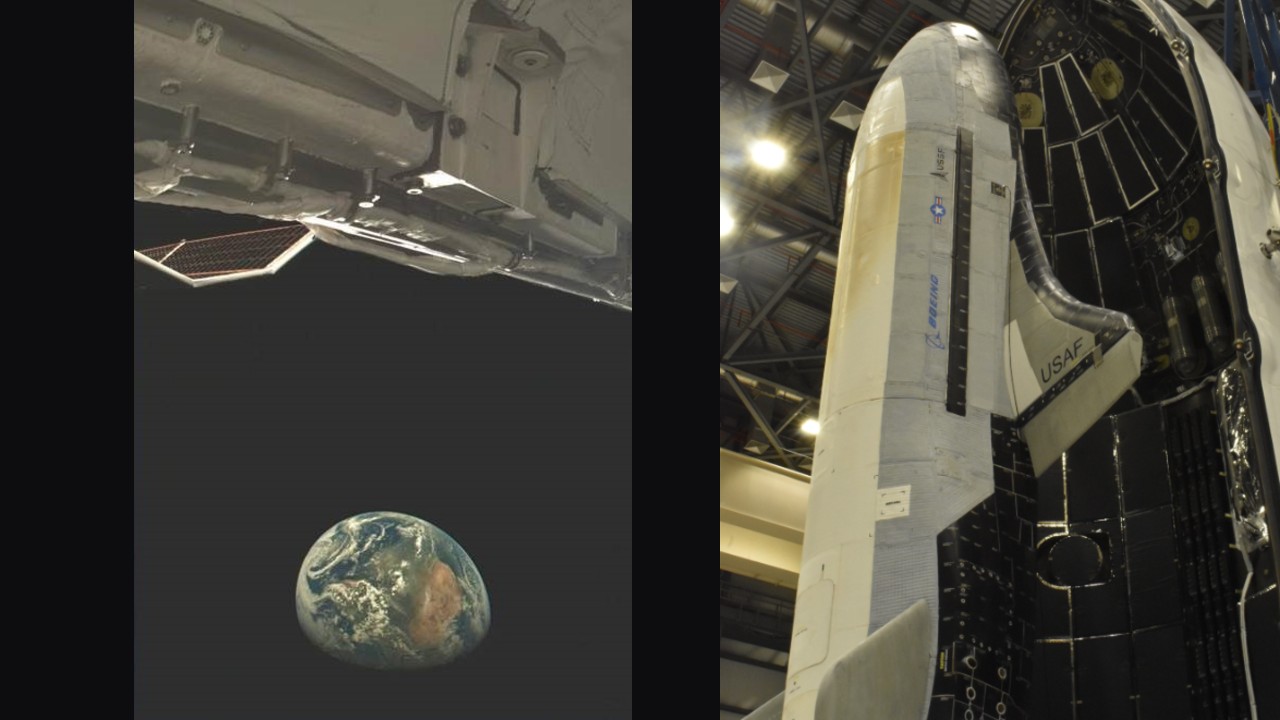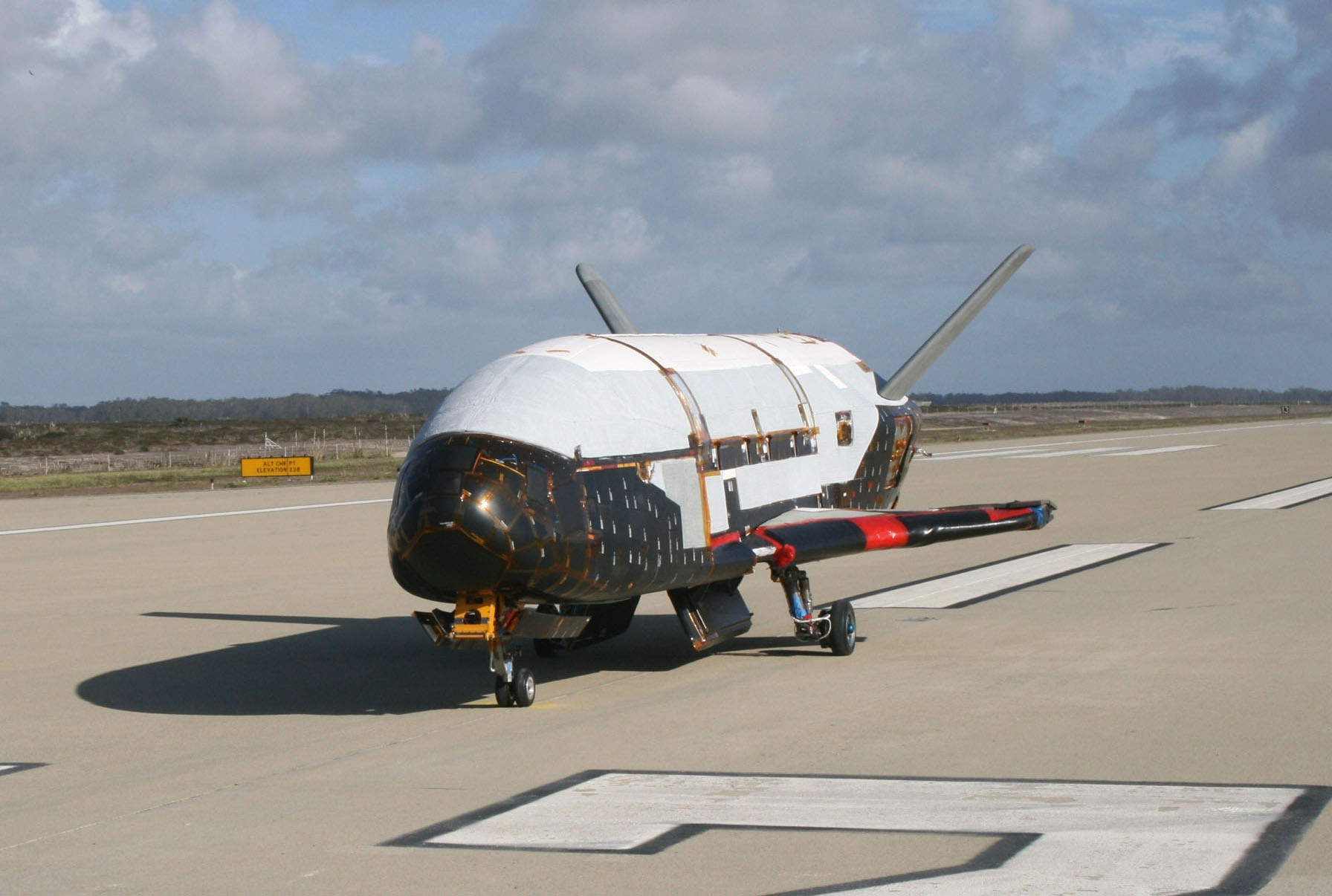
Trump's 'One Big Beautiful Bill' gives US Space Force $1 billion for secretive X-37B space plane
How the money for this classified project will be spent is unknown.

U.S. President Trump's "One, Big Beautiful Bill Act," H.R. 1 includes $1 billion for the U.S. Space Force (USSF) X-37B military spacecraft program.
The largely classified X-37B – also called the Orbital Test Vehicle (OTV) program – carried out its seventh mission, landing at Vandenberg Air Force Base in California on March 7, touching down after 434 days in orbit.
As for how that $1 billion would be spent, and when the next X-37B would depart, Space.com reached out to the space plane's builder, Boeing. We received a "thank you for the query" in response, and an inquiry-altering note to contact the Air Force for comment on the X-37 schedule and budget.
Space test platform
"The USSF X-37B program supports technology risk reduction, experimentation, and operational concept development for future re-usable space vehicles," responded USAF Colonel Lori Astroth, Public Affairs Deputy Director for Space within the Secretary of the Air Force Office of Public Affairs at the Pentagon.
The X-37B program "serves as a flexible space test platform to conduct various experiments that can be transported to space and returned to Earth," Col. Astroth added. "Further information regarding X-37B's cost and budget information is not releasable."
Highly elliptical orbit
That last hush-hush flight of the X-37B Orbital Test Vehicle-7 (OTV-7) featured the craft being hurled into a highly elliptical high Earth orbit via a Falcon Heavy rocket back on December 28, 2023.
After aerobraking to a low Earth orbit and completing its test and experimentation objectives, the space plane successfully performed its deorbit and landing procedures.
Breaking space news, the latest updates on rocket launches, skywatching events and more!
As did the previous (OTV-6) space plane trek, OTV-7 also involved a service module that expanded the capabilities of the spacecraft.
"The successful completion of the novel aerobraking maneuver demonstrated the agile and flexible capabilities the X-37B provides the United States Space Force," according to the statement issued by the Secretary of the Air Force Public Affairs.
The aerobraking technique entails use of atmospheric drag over the course of multiple passes to change orbits while expending minimal fuel.
"While on orbit, Mission 7 accomplished a range of test and experimentation objectives intended to demonstrate the X-37B's robust maneuver capability while helping characterize the space domain through the testing of space domain awareness technology experiments," the statement notes.

Flight roster
Here's a listing of previous flights of the space plane:
- OTV-1: launched on April 22, 2010 and landed on December 3, 2010, spending over 224 days on orbit.
- OTV-2: launched on March 5, 2011 and landed on June 16, 2012, spending over 468 days on orbit.
- OTV-3: launched on December 11, 2012 and landed on October 17, 2014, spending over 674 days on-orbit.
- OTV-4: launched on May 20, 2015 and landed on May 7, 2015, spending nearly 718 days on-orbit.
- OTV-5: launched on September 7, 2017 and landed on October 27, 2019, spending nearly 780 days on-orbit.
- OTV-6: launched on May 17, 2020 and landed on November 12, 2022, circling Earth for 908 days.
- OTV-7: lofted on December 28, 2023 and touched down on March 7, 2025, circling Earth for 434 days.
First use technologies
The builder of the vehicle, Boeing, has previously noted that the X-37B makes use of several “first use in space” technologies including:
- Avionics designed to automate all de-orbit and landing functions.
- Flight controls and brakes using all electro-mechanical actuation; no hydraulics on board.
- Use of a lighter composite structure, rather than traditional aluminum.
- New generation high-temperature wing leading-edge tiles and toughened uni-piece fibrous refractory oxidation-resistant ceramic (TUFROC) tiles and advanced conformal reusable insulation (CRI) blankets.
According to Aviation Week & Space Technology, the Space Force is utilizing the X-37B system as an on-orbit testbed to try out new technologies, to better understand similar adversarial platforms and to design new training environments, citing comments to the publication in January by Chief of Space Operations General Chance Saltzman.

Leonard David is an award-winning space journalist who has been reporting on space activities for more than 50 years. Currently writing as Space.com's Space Insider Columnist among his other projects, Leonard has authored numerous books on space exploration, Mars missions and more, with his latest being "Moon Rush: The New Space Race" published in 2019 by National Geographic. He also wrote "Mars: Our Future on the Red Planet" released in 2016 by National Geographic. Leonard has served as a correspondent for SpaceNews, Scientific American and Aerospace America for the AIAA. He has received many awards, including the first Ordway Award for Sustained Excellence in Spaceflight History in 2015 at the AAS Wernher von Braun Memorial Symposium. You can find out Leonard's latest project at his website and on Twitter.
You must confirm your public display name before commenting
Please logout and then login again, you will then be prompted to enter your display name.

